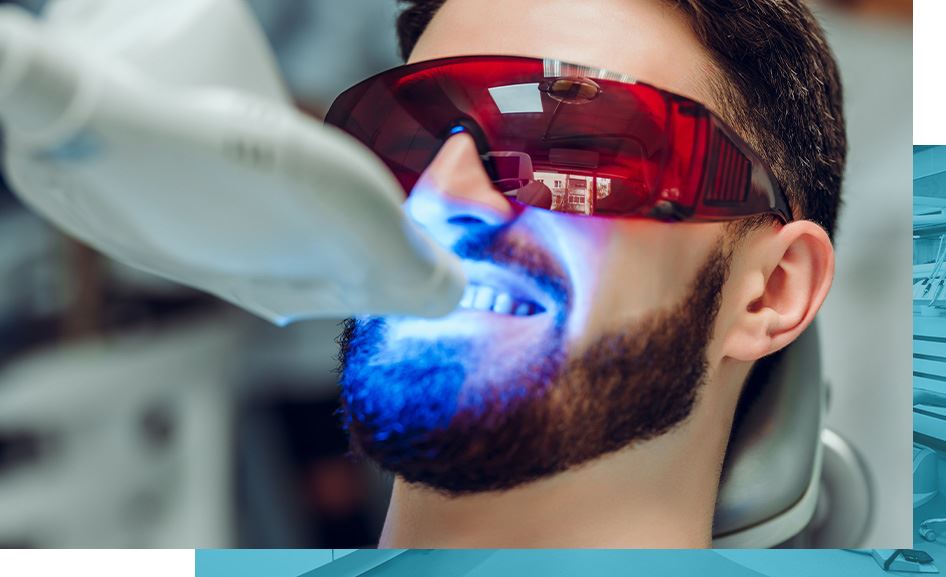Ashburn Teeth Whitening Services
Advanced Dental Care in Ashburn
Loudoun Smile Center is dedicated to providing top-notch teeth whitening services in Ashburn. Our experienced team is committed to providing our patients with the best possible results for their specific needs and preferences. Whether you're looking to brighten your smile in time for a special occasion or you’re just looking to boost your confidence with smile that shines, Loudoun Smile Center can help you get the dazzling white teeth you deserve.
Contact us today at (703) 337-3494 to schedule teeth whitening in Ashburn and see how we can help you feel comfortable and confident in your smile!

Teeth Whitening You Can Trust
We use advanced, evidence-based teeth whitening methods to help you achieve the smile of your dreams. Our team utilizes Fotona teeth whitening lasers to safely, quickly, and effectively brighten your smile.
These types of lasers penetrate deep into the enamel to remove unwanted stains, while also repairing minor imperfections. With our teeth whitening services, you can enjoy a more vibrant smile with results that last longer than traditional methods.
Long-Lasting Results That’ll Keep You Smiling
With Fotona teeth whitening lasers, you’ll notice results right away, and your smile should remain noticeably brighter for at least six months following treatment.
For a smile that looks naturally stunning without any bleaching or corrosive chemicals, Loudoun Smile Center is the place to go. We’re here to help you achieve a smile that lasts.

Schedule a Teeth Whitening Appointment Today
At Loudoun Smile Center, we believe that everyone deserves a beautiful and confident smile. That’s why our experienced team of dental professionals provides patient-centered, individualized care. With our teeth whitening services, you can trust you’ll receive a naturally radiant and long-lasting smile that you can enjoy for many months to come.
Why Choose Loudoun Smile Center for Teeth Whitening in Ashburn?
At Loudoun Smile Center, we understand that each patient has unique needs when it comes to professional teeth whitening in Ashburn. That's why we offer plans tailored to suit your individual preferences. Our skilled dental professionals prioritize your satisfaction throughout the whitening process, ensuring a safe and effective experience.
The Benefits of Professional Teeth Whitening
Professional teeth whitening at Loudoun Smile Center offers numerous advantages over at-home whitening kits. Our in-office treatments deliver faster and more dramatic results, effectively eliminating stubborn stains and discoloration to reveal a noticeably brighter smile. Additionally, our experienced dental team ensures that the whitening process is performed safely to minimize sensitivity and protect your oral health.
For teeth whitening services in Ashburn, Loudoun Smile Center is here. Contact us today at (703) 337-3494 to learn more about how our laser technology can brighten your smile!
Contact Us
Our Patients Are Talking
Read about some great experiences from the dental chair!
-
Had a great appointment with Laura, Dr. Bachour and Fanny at Loudoun Smile Center! Highly recommend!
- Aaron -
Had a great appointment with Laura, Dr. Bachour and Fanny at Loudoun Smile Center! Highly recommend!
- Aaron


